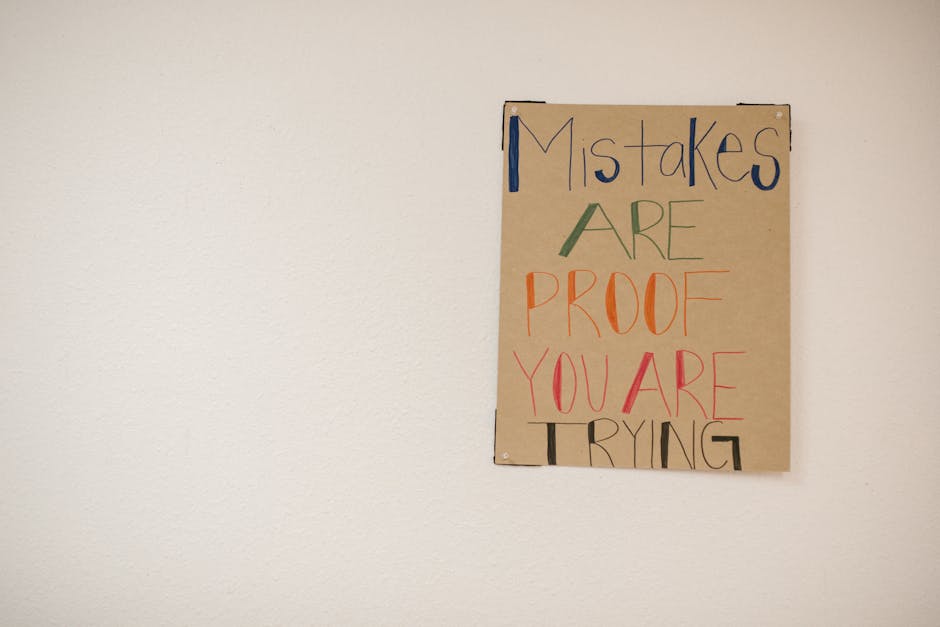Embrace Failure: Transforming Online Learning for Student Resilience
Online learning has reshaped education dramatically in recent years, presenting both challenges and opportunities. One unconventional but increasingly popular approach in this digital educational landscape is the idea of embracing failure as a fundamental part of the online learning experience. By recognizing that mistakes are not the end of the road but rather stepping stones to success, we can help students develop resilience, grit, and ultimately, a growth mindset. This article will explore how integrating failure into the fabric of online courses enhances the educational journey and drives student success.
The Paradigm Shift: Understanding Failure in Education
For generations, failure has been stigmatized in academia. Students often walk a tightrope of perfection, fearing the repercussions of poor performance. However, a growing body of research suggests that reframing failure as a learning opportunity can yield significant psychological benefits and foster resilience. Embracing failure involves acknowledging that mistakes are an essential part of the learning process, and it’s through these failures that students can gain valuable insights and develop crucial problem-solving skills.
Many successful online programs have already started to incorporate failure as a learning tool. For instance, some platforms utilize low-stakes assessments that encourage learners to experiment without the fear of significant consequences. This approach mirrors real-world scenarios where errors can lead to breakthroughs and innovation. One such example is an online coding bootcamp where students are encouraged to make mistakes in their projects. Rather than penalizing them, instructors offer feedback and guidance, allowing learners to iterate and improve based on their experiences.
Real-World Examples: Programs That Have Embraced Failure
Case Study 1: A Coding Bootcamp Success Story
Consider the case of a prominent online coding bootcamp. Rather than merely testing students on their code-writing ability, the program is designed to include “failure checkpoints” at various stages. These checkpoints involve assessing students on their processes, including the mistakes they make, how they resolve these errors, and what learning emerges from those experiences. This case shows that the ability to recognize, analyze, and learn from failure can empower students in ways traditional grading methods cannot, ultimately preparing them for the challenges of the tech industry.
Case Study 2: The Art of Digital Storytelling
Another instance is found in online courses focused on digital storytelling. These courses encourage participants to experiment with different narrative techniques, even if the initial attempts yield subpar results. Instructors celebrate creativity over perfection, helping students explore various storytelling forms without fear of critique. This approach fosters a nurturing atmosphere where students feel comfortable to take risks and explore their creativity, ultimately creating more engaging content aligned with their unique voice.
Psychological Benefits of Embracing Failure

The benefits of reframing failure as a learning tool go beyond mere academic performance. Educators backing this approach have noted improved motivation and engagement. When students shift their focus from avoiding failure to embracing it, they tend to cultivate a growth mindset—believing in their ability to learn and grow through effort. Researchers at Stanford University found that students who adopt a growth mindset are more resilient, better equipped to deal with challenges, and more likely to achieve their goals.
Furthermore, instilling resilience through failures fosters a sense of autonomy and self-efficacy in students. They begin to trust their instincts and develop critical thinking skills as they address and overcome obstacles. This psychological shift can ameliorate the anxiety often associated with the online learning environment, transforming it into a supportive space for exploration and discovery.
Strategies for Educators to Make Failure Work in Online Learning

Implementing an approach that embraces failure in online courses involves thoughtful strategies. Here are some ways educators can integrate this perspective into their course design:
1. Create a Safe Learning Environment

Foster a supportive and safe learning environment where mistakes are normalized and viewed positively. Set the tone early on; let students know that failure is a natural part of learning. This can be done through introductory modules, discussion forums, or even orientation sessions that emphasize the importance of experimenting and taking risks.
2. Implement Low-Stakes Assessments

Design curriculum components that emphasize low-stakes assessments. As mentioned earlier, use quizzes, drafts, or almost playful assignments that allow students to fail without facing dire consequences. Examples include collaborative projects where students can fail together and learn collectively.
3. Offer Constructive Feedback

Ensure that feedback is constructive and focused on the learning process rather than solely on the end result. Feedback should address not just what went wrong, but also how the student can improve and what learning emerged from the experience. This helps build a culture of reflection and continuous improvement.
4. Encourage Peer Learning

Implement peer review systems where students assess each other’s work. This promotes collaborative learning, as students gain perspective from their peers and learn that everyone faces challenges. Sharing experiences builds community and reinforces the idea that failure is an integral part of growth.
5. Integrate Reflective Practices

Encourage students to engage in reflective practices after assignments or projects. This could involve journal entries, discussions, or video logs where they analyze their failures and the lessons learned. This practice enables students to internalize their growth journey and cherish their learning experiences, even when they don't go as planned.
The Role of Technology in Embracing Failure

Technology plays a pivotal role in facilitating an environment that embraces failure. Learning platforms can integrate tools that promote trial-and-error methods, simulations, and interactive assessments that empower learners to experiment with different strategies. Gamification also serves as an effective method, allowing students to engage with content dynamically while providing the safety net of virtual consequences. As captured in our blog post on gamification, incorporating game mechanics into online courses can motivate learners to face challenges head-on.
Final Thoughts on Embracing Failures in Online Learning
Embracing failure in online education not only reshapes the learning experience but also empowers students to cultivate resilience, creativity, and critical thinking skills. This shift in perspective can guide students through their academic journey and prepare them for real-world challenges. By normalizing failure as part of the process, we provide students with the tools they need to thrive in an uncertain world.
For educators ready to implement this transformative strategy, it’s essential to design interactive and engaging courses that integrate the principles outlined. By doing so, they stand to create educational experiences that lead to real, measurable success for students as they navigate the often complex landscape of online learning.
As we move forward into a future defined by rapid change, it’s critical for educators to embrace the chaos that comes with learning. In a world where resilience is more vital than ever, embracing failure might just be the key to unlocking the potential that lies within every student.
To further explore diverse educational strategies, consider reading about self-directed learning or delve into the innovative ways technology is shaping the educational landscape, such as the impact of AI on online education.






